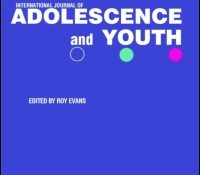eric.ed.gov har udgivet: This collection of lesson plans is designed to help students with disabilities meet Arizona academic standards and learn different types of self-determination skills. Lesson plans are provided for students in grades K-12 with different disabilities and address: (1) oral language, including identifying homonyms; (2) reading acquisition, including teaching reading using the Fernald (VAKT) Method, making words, and fluency; (3) reading comprehension; (4) study skills, including improving test taking skills, managing daily activities, and organizing notebooks; (5) social skills, including social behavior skill development, peer relationships, and giving and receiving compliments; (6) math computation; (7) math problem solving, including balancing checkbooks; (8) written expression, including self-expression, proofreading, and writing conventions; and (9) technology, including using the Internet and team teaching with computers. For each lesson, a targeted academic… Continue Reading →
Like this:
Like Loading...
tandfonline.com har udgivet en rapport under søgningen „Teacher Education Mathematics‟: Abstract Abstract During school closures forced by the COVID-19 pandemic, remote/online learning has been adopted to help students continue to learn. Student engagement, which is energized by motivation as explained by self-determination theory (SDT), is a prerequisite for learning. Therefore, this study investigated how the three perceived psychological needs in SDT affected student engagement in online learning using pre- and post-questionnaires completed by 1201 Grade 8 and 9 students within 6 weeks of partaking in online learning. The results suggested that digital support strategies better satisfied students’ needs, that all of the needs were predictors of the level of engagement, and that relatedness support was very important. Link til kilde
Like this:
Like Loading...
tandfonline.com har udgivet en rapport under søgningen „Teacher Education Mathematics‟: ABSTRACT ABSTRACT A course on ethics and history of technology, taught to 1886 first-year engineering students of 14 engineering departments was redesigned using Self-Determination Theory (SDT) by adapting many course elements at the same time. We applied the situational level of Vallerand’s hierarchical model, analysing how the elements of this ethics and history course influenced basic needs and motivation in a mediating role, which influenced in turn course outcomes. Regression analysis demonstrated the central role of competence in the assignment for intrinsic motivation. A complementary qualitative analysis showed strong polarisation between different types of students and indicated many remaining challenges. We conclude that the Vallerand model was a useful tool for prioritising redesign in this course. We suggest further research… Continue Reading →
Like this:
Like Loading...

tandfonline.com har udgivet en rapport under søgningen „Teacher Education Mathematics‟: Abstract Abstract The purpose of this study was to investigate the psychological peculiarities of the professional self-determination of social orphans in senior adolescence. Two hundred sixty orphans aged 14–16, residing in Central Kazakhstan, were examined to determine the aptitude of orphan asylum adolescents to certain professions. Statistical analysis of male and female groups (p ≤ 0.002) found differences in the following characteristics. The typical spheres for girls were ‘individual-individual’ and ‘individual-imagery’. They focused on communication in professional activity and creativity. The typical spheres for girls were ‘individual-machinery’ and ‘individual – semiotic system’. Statistical differences were found in such professional spheres as law, transport, pedagogy, service sector, engineering, and electric engineering. The results of this study can be used in professional consultations and… Continue Reading →
Like this:
Like Loading...


